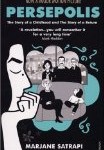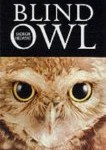Persepolis is often quoted as being one of the best graphic novels in existence, so I have been wanting to read it for a while. It is an autobiography about what life was like for the author growing up in Iran and her experiences of being sent away to school in Austria.
I’d describe Persepolis as being an important book, rather than an enjoyable one. A lot of it felt like reading a very good history book, rather than a personal experience of life in Iran. I loved the details of her personal life and did find some sections amusing, but overall the mood of the book was quite oppressive. It was very informative and I admit that there was a lot I didn’t know before reading it, but I would have preferred to learn more about her life than the politics of the country.
It was also quite slow to read. There was a lot of detail in each picture, so the pace was much slower than the average graphic novel. The illustrations were quite simple, but they portrayed all that was needed to be put across effectively.
Whilst I was reading the book I saw that the film was being shown on television, so decided to record it and watch it once I’d finished. It was an interesting comparison as I think it is the closest a film has ever come to following a book – it was just like seeing the pictures on each page moving in front of you, which meant that this is another rare example of a film being slightly better than the book.
I think that this is a book everyone should read at some point and it will probably become a classic of our age.
Did you enjoy Persepolis?
What is your favourite graphic novel?



